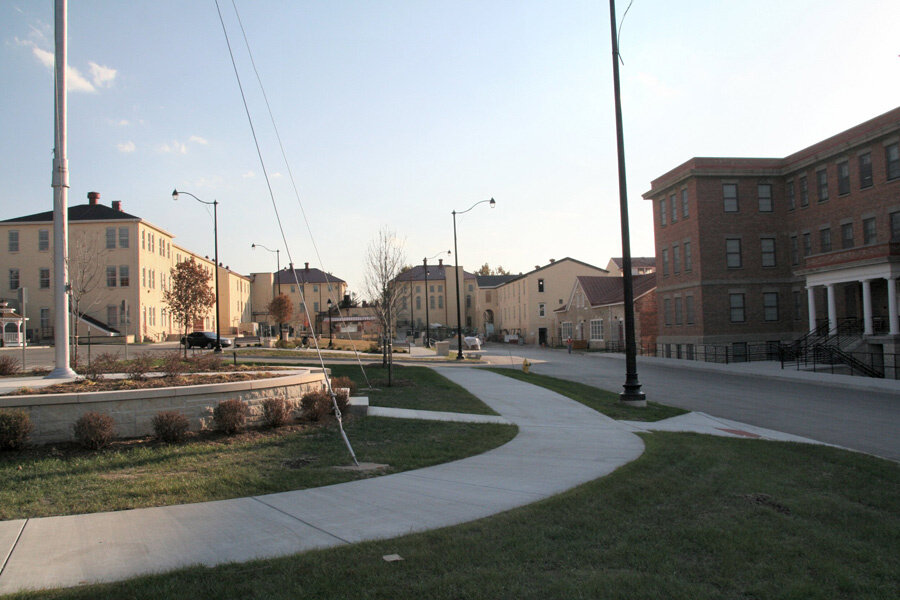
Former United States
Disciplinary Barracks (USDB)
Fort Leavenworth Military Post
Client: BIBB & Associates, GLMV Architecture, and Yaeger Architecture
The United States Disciplinary Barracks served as a maximum-security disciplinary barracks for Army and Air Force personnel until 2002. The historic USDB complex is located on the northeast corner of Fort Leavenworth - a 12 ½ acre walled prison complex that once included 26 buildings dating from 1840 to 1972.
A new USBD facility was completed at Fort Leavenworth in 2002, bringing to a close the one hundred and thirty-year history of Fort Leavenworth’s original military prison. At that time, “the Castle” – the radial cell house, was demolished and the remaining twelve prison buildings were mothballed pending future use.
An assessment was conducted to evaluate the condition and historic integrity of the remaining buildings and their potential for reuse to meet the need for classroom and administrative space on base. Spencer Preservation participated on the design teams for rehabilitation of the historic USDB buildings, projects funded by U.S. Army Corps of Engineers and/or Fort Leavenworth. The scope of work for the building rehabilitations generally involved converting the vacant, mothballed buildings to classroom and/or administrative use.
Since 2007, all but one of the remaining twelve buildings have undergone complete rehabilitation and now contribute to a campus setting that houses classroom and administrative space for the Civilian Education System and other educational and training functions. In addition to the rehabilitation of individual buildings for specific education and administrative functions, the improvements included construction of a parking lot to serve the campus functions, opening of “The 12th Brick” a restaurant catering to the influx of students and workers in this area of the post, and rehabilitation of the central green space that includes interpretive plaques that share the buildings’ histories and a new monument that features a ghost image of the former “castle.”





















